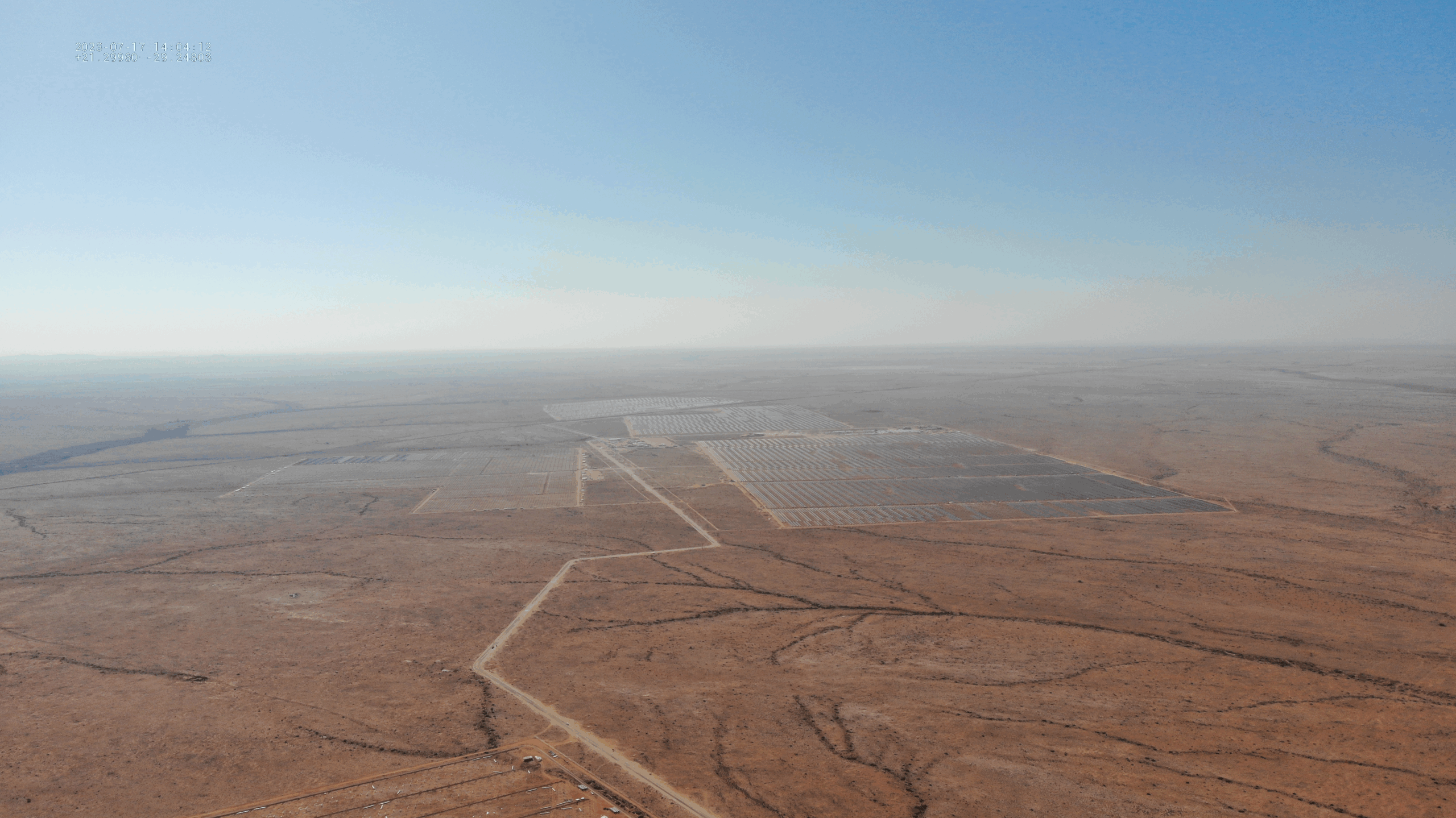The Kenhardt project, with a capacity of 540 MW of solar power and 225 MW/1,140 MWh of battery storage, stands as one of the largest hybrid solar and battery storage facilities globally. The project was awarded to a consortium of Scatec and H1 Capital under South Africa’s technology-agnostic Risk Mitigation Independent Power Producer Procurement Programme (RMI4P) launched in 2020.

Norfund’s investment was designed to help boost the supply of renewable energy in South Africa, thereby reducing greenhouse gas emissions and supporting a more reliable power grid. This project serves as a compelling example of how battery storage can help solar power play an even more important role within a renewable energy system in developing countries.
Investment context for the Climate Investment Fund
Emerging markets are essential to meeting the goals of the Paris Agreement as they account for 34% of global GHG emissions (excl. China) and their emissions are expected to rise significantly due to population and economic growth. It is estimated that emerging markets will need more than USD 1 trillion investment per year to achieve net zero by 205012. This is more than six times the current investment of USD 150 bn.
The cost of capital in emerging markets (EMs) is significantly higher than in developing countries, driven by high country risk premiums. Cost of capital is key to the competitiveness of renewable energy projects as the upfront capital expense is typically higher than fossil projects. In EMs the cost of capital can be more than 7X higher than in developed countries, especially driven by high country risk premium3. Access to capital at more competitive terms is therefore key to replacing planned and existing coal power and fossil fuels with renewable energy. Without this, it will not be possible to achieve the phenomenal scale up in investment required to deliver on global climate goals.
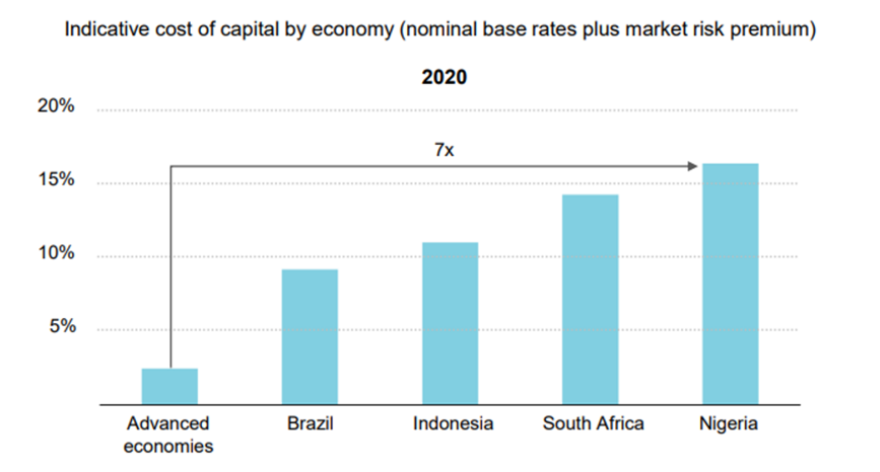
The challenging South African power sector
The South African power sector has been facing significant challenges. The country’s power generation and distribution infrastructure, primarily managed by the state-owned utility Eskom, has been grappling with lack of reliable capacity due to issues of aging coal-fired infrastructure, lack of maintenance, and financial instability. Frequent planned power outages, often referred to as “load shedding,” used to be a common occurrence, leading to disruptions in daily life and significant economic impacts: Reduced productivity and financial losses for businesses, increased costs because of the need for expensive backup power solutions like generators, investment uncertainty and job losses were some of the consequences. In fact, a study commissioned by ESKOM, found that a one percentage point increase in load shedding was associated with a 0.4 percentage point drop in GDP growth. The estimated total cost of load shedding between 2007 and 2019 was approximately $2.41 billion, which is roughly the impact of the financial crisis in 2008/9 4.
The South African government has taken steps to address these challenges, including efforts to diversify the energy mix by incorporating renewable energy sources such as wind and solar power. South Africa, the world’s 12th largest emitter of greenhouse gas emissions 5, aims for 33% renewable electricity by 20306 to transition towards a more sustainable energy mix and reducing the country’s carbon footprint.
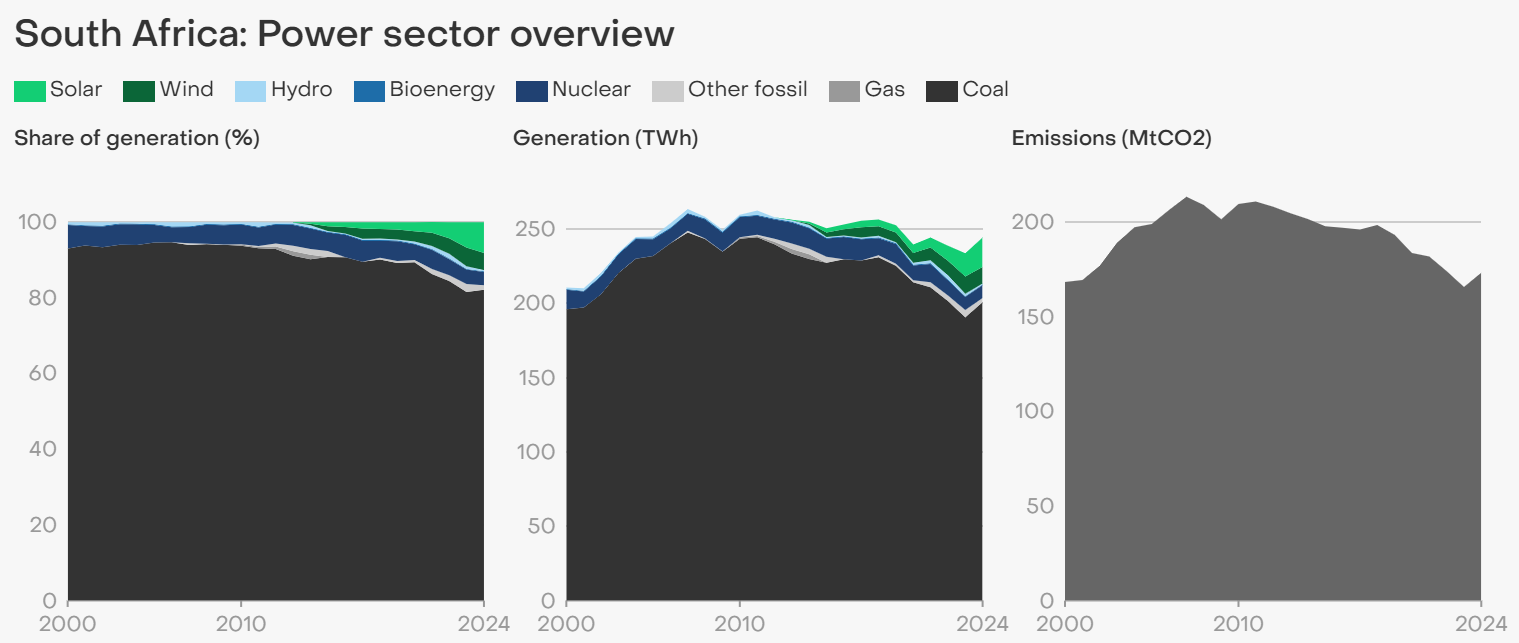
Norfund’s investment
- Mandate: Climate mandate
- Investment amount: ZAR 640 million (about NOK 395 million) to the holding company H1 Capital Ltd
- Instrument: Mezzanine loan
- Investment year: 2022
- Technology: 540 MWp solar and 225 MW/ 1,140 MWh battery storage hybrid project
- Location: South Africa, !Kheis municipality in the Northern Cape. Located 20 km from Kenhardt town.
- Estimated annual avoided emissions: 870,000 tonnes

About the investment project
The Kenhardt project is a 540 MWp solar power plus 1,140 MWh battery project developed by Scatec and H1 Capital in South Africa. The project was awarded in 2022 after some delays and became operational in December 2023.
The project was bid under the Risk Mitigation Independent Power Producer Procurement Program (RMI4P), which differs from the standard renewable procurement program in South Africa in that RMI4P was set up as an emergency procurement round designed to meet the short-term electricity supply gap and aims mainly to reduce the use of expensive diesel-based peaking electrical generators. The program was technology agnostic but required that the projects were able to dispatch power to the grid between the hours of 05:00 and 21:30.
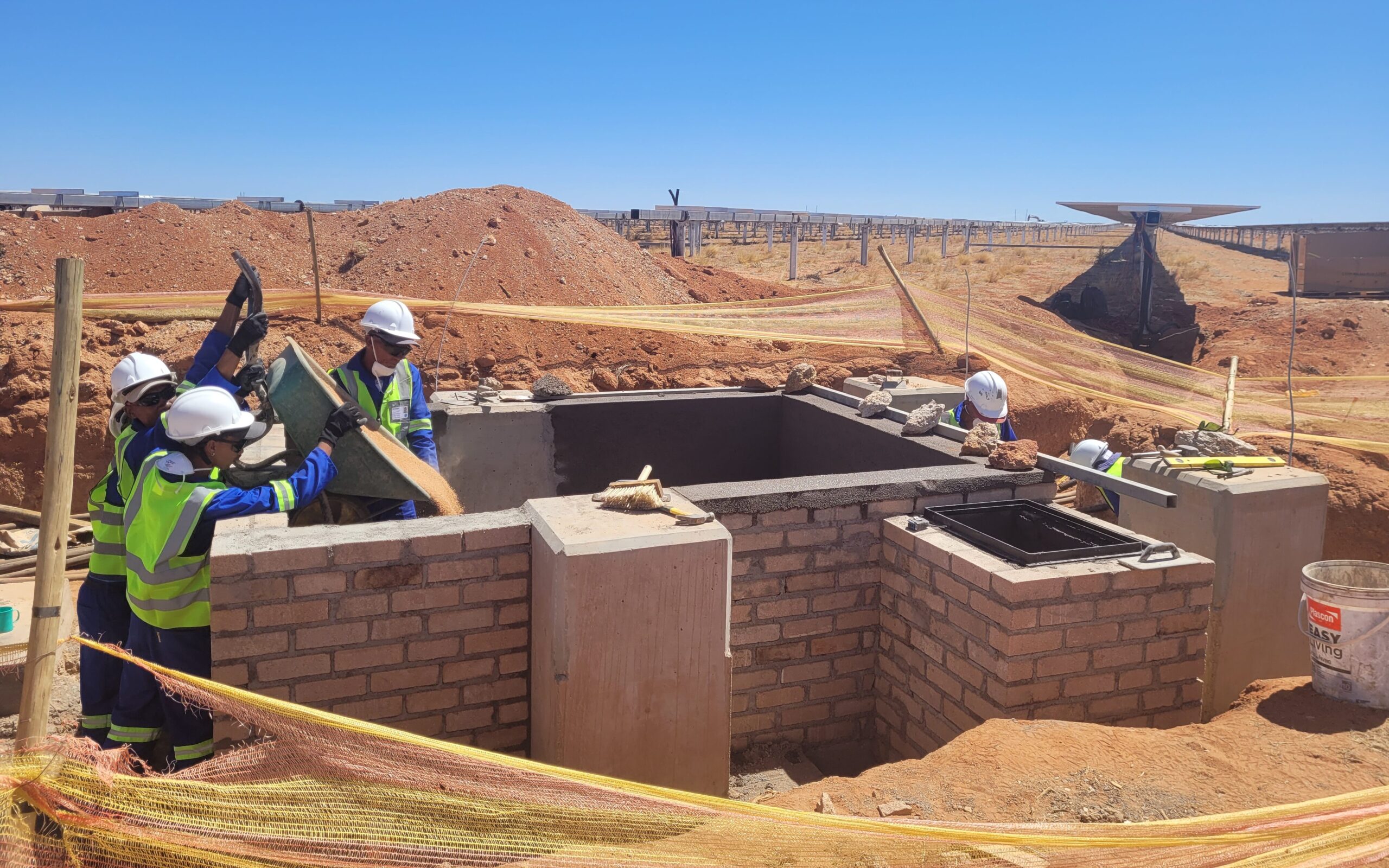
Distinguished as the only fully renewable solution among the contenders, the Kenhardt project surpassed fossil-fueled alternatives in the competitive bidding process. By day, solar panels supply electricity to the grid while simultaneously charging the expansive Battery Energy Storage System (BESS). When sunlight fades, the plant delivers power by drawing from the battery, ensuring a consistent supply to meet contractual obligations during non-solar hours.
The project has been awarded a 20-year power-purchase agreement (PPA) with Eskom. This project receives a fixed monthly payment for availability within the agreed timeframe. Scatec is turn-key EPC contractor and is together with H1 responsible for operations and maintenance.
Shareholders
- Scatec: 51% of the Kenhardt project
- H1 Capital: 49% of the Kenhardt project
Norfund, BII and IDC financed part of H1’s stake in the project through a mezzanine loan. Norfund also has an equity holding in H1 Capital since 2021. H1 Capital is a BEE company that owns and invests in renewable energy projects throughout South Africa.
In addition, there is a lending consortium with Standard Bank as the lead senior lender, and BII. The total capex is approximately USD 1 billion.
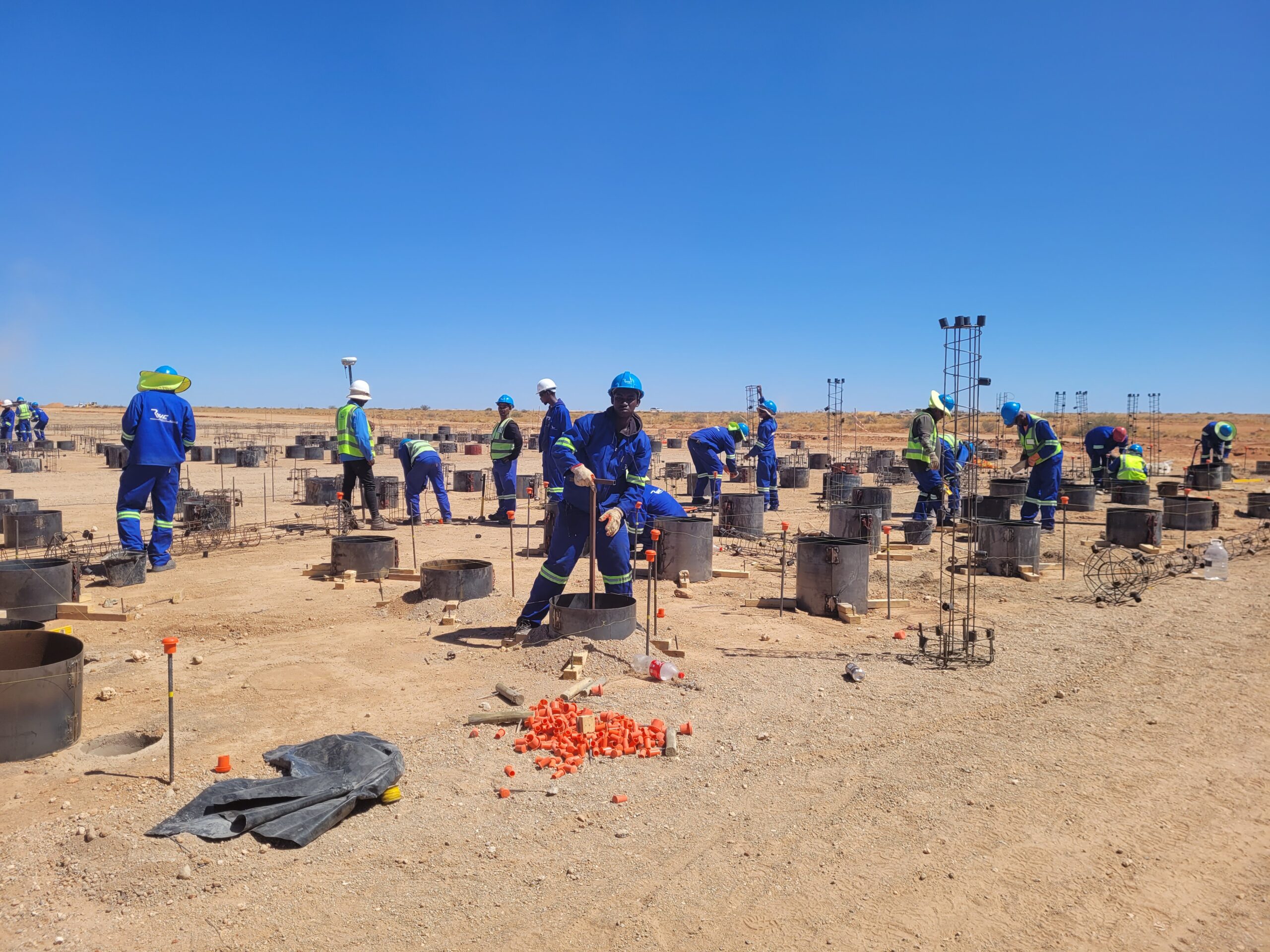
Norfund’s role and additionality
Norfund contributed as an investor in the project, providing equity financing to a Black Economic Empowerment (BEE) investor and supporting the South African government’s ambitious renewable energy program. This involvement addressed a gap in available financing, as local banks and financers faced exposure and capacity constraints as well as low appetite for greenfield project development, including relatively new battery technology, due to the risk involved. Norfund’s participation also supported objectives such as local job creation, skills transfer, and technology development, complementing the government’s efforts to increase both power supply and local black ownership within the renewable energy sector.
Broad-Based Black Economic Empowerment (BEE)
BEE is a South African government policy that aims to advance economic opportunities for previously disadvantaged Black South Africans. The South African government require a minimum of 49% local black ownership in the renewable energy procurement program.
Securing proper environmental and social standards
Both local regulations and the IFC Performance Standards for Environmental and Social Sustainability guided Norfund’s assessment of E&S risks and mitigating actions. An independent assessment was conducted to evaluate the project’s environmental and social risks, as well as to review Scatec’s systems and policies for managing these risks. This independent assessment complemented Scatec’s own risk assessments and action plans, government-mandated studies and permits, and additional expert evaluations addressing topics such as cultural heritage, human rights, geohydrology, traffic impacts, and ecological considerations. This resulted in an Environmental and Social Action Plan (ESAP) with follow-up monitoring.

Health and safety
Throughout the construction phase, traffic-related incidents represented the primary concern due to the significant daily movement of personnel—approximately 40 buses and 50 to 60 external trucks traversed the site each day, often in conditions challenged by dust and limited visibility. To mitigate these risks, the project implemented a comprehensive driver training program, all transport vehicles were fitted with tracking devices to monitor driver behavior, a dedicated observer was appointed to monitor and report any incidents, alongside the enforcement of strict speed limits.
Other critical risks included occupational health and safety incidents affecting construction workers, as well as broader community concerns arising from the influx of job seekers. These included potential transport accidents within the local area and community-worker interactions related to public health issues, such as HIV and Gender-Based Violence and Harassment (GBVH). To further align with international best practices on GBVH, the project conducted a GBVH risk assessment and specific actions were implemented, including community and employee GBVH awareness training.
Community relations and social risks
The power plant is located in a remote region of South Africa, where many households have low incomes. As of 2024, the provincial unemployment rate reached 27.4 percent, with nearly half the local population living below the poverty line. Residents face ongoing social challenges such as substance abuse, violence, and limited access to essential services. Low educational attainment further restricts employment opportunities. Despite these obstacles, the !Kheis community demonstrates an entrepreneurial spirit, as seen by the engagement of local businesses contracted for various project services.
Drawing on its extensive experience constructing solar power plants in the area, Scatec retained the same management team for this project’s construction phase. Previous projects highlighted the critical importance of strong community relations, which led to the appointment of dedicated HR and Industrial Relations managers, as well as Community Liaison Officer.

A comprehensive stakeholder engagement plan was developed, outlining strategies to foster and maintain positive relationships with all stakeholders, including mechanisms for addressing grievances. A transparent and inclusive process for workforce recruitment during construction was key to creating positive outcomes for local residents (in the !Kheis municipality as well as the town of Kenhardt). This commitment to fairness also extended to selecting local suppliers for goods and services, with particular care given to ensuring equitable opportunities across different municipalities, and for the benefit of as many suppliers as possible, to avoid social discord.
South African government regulations of national Power Purchase Agreements (PPAs) require the new renewable energy projects to design and implement socioeconomic development projects in nearby communities. For the Kenhardt project, these initiatives have included supporting municipal soup kitchens, organizing sports tournaments, providing food to schools, and helping with water purification efforts. Access to clean water remains a major concern in the region, and although not required by law, the project also provided generators to power pumps that distribute water locally.
Environmental considerations and biodiversity
The power plant occupies a large expanse of land in a remote area. During site selection, Scatec undertook a thorough process to avoid identify, assess and ecologically sensitive zones. The vegetation includes both endemic Namaqualand Broken Veld, as well as Bushmanland Arid Grassland, which is widespread in South Africa and not classified as threatened. Species of nationally protected plants, such as the “Quiver Tree”, classified as vulnerable, were present on the site. To avoid and mitigate impact on biodiversity, these plants were either left undisturbed within the project boundaries or carefully relocated just outside the area.
Water needs for the project, such as cleaning solar panels, are met by sourcing water from the local municipality via tanker trucks. This water originates from the Orange River, ensuring that groundwater resources are not depleted.
Positive impacts locally and globally
The Kenhardt project avoids greenhouse gas emissions by replacing diesel peaking power, while also providing more electricity and stability to the grid, enabling job creation and economic growth. At the local level, the project contributes to job creation, both on-site and in the supply chain, supports skills development, and strong female representation in the workforce.
Avoided emissions
For projects under the Climate Investment Fund, Norfund estimates the expected avoided emissions before the investment decision, as well as annually when the project is operational. The avoided emissions are estimated by using a national emission factor which considers today’s energy mix combined with expected future new build as an estimation of what energy mix the power plant in will substitute. The methodology is IFI’s Methodological Approach for the Common Default Grid Emission Factor Dataset, which is commonly used among financial institutions, Multilateral Development Banks and Development Finance Institutions.
- Ex-ante avoided emissions: The contracted electricity from the power plant was estimated to avoid 870,000 tonnes CO2e annually when operational.
- Actual production and avoided emissions: The project produces around 900 GWh electricity annually. In 2024, the estimated avoided emissions were around 900,000 tonnes CO2e.

Job creation and increased income
Local hiring and skills development is an important part of developing energy projects. Job opportunities were announced in various channels in the “Kheis municipality area and most workers were from this or neighboring areas. Throughout the construction phase, more than 3,100 individuals took on a wide range of onsite tasks. Creating a project labor agreement was key to set fair employment standards, including guidelines for work conditions, and health and safety for all workers.
Upskilling opportunities were provided to select workers who received specialized heavy machinery training, a valuable skill that can be transferred to future projects and other industries. Participation in this training was determined through an application process.
In addition to direct employment, numerous local small and medium-sized enterprises (SMEs) were contracted for essential services, such as bush clearing before construction, facility cleaning, backfilling, concrete supply, fencing, and transportation. In awarding these contracts, evaluators considered not just the technical qualifications of the businesses, but also their geographic location, ensuring a fair and equitable distribution of opportunities among all participating communities, as outlined in the E&S section above.
Transitioning from construction to ongoing operations and maintenance is a critical phase, as the workforce required decreases significantly. The project now provides permanent employment to around 100-120 people, of which 37%-39% women.
The main job creation impact of power projects is created through their effects on the wider economy: better, more reliable energy supplies, and fewer and shorter outages are helping to foster job creation and economic growth as new businesses are established, and productivity improves.
Strong female presence
Traditionally, construction work has been a male-dominated field. However, the Kenhardt project stood out for its notable inclusion of women. Throughout the project, 489 women—representing 13% of the workforce—were employed. Women-led businesses secured an impressive 48% of all subcontracting opportunities, spanning electrical work, operations and maintenance (O&M), and mechanical services7. Several factors contributed to this strong female presence: high local unemployment and poverty encouraged more women to apply, and mandatory substance testing during recruitment saw a greater proportion of women passing, making them strong candidates. Additionally, a centralized procurement process gave all registered SMEs equal access to contracts, ensuring that women-led enterprises could compete on equal terms with their male counterparts.
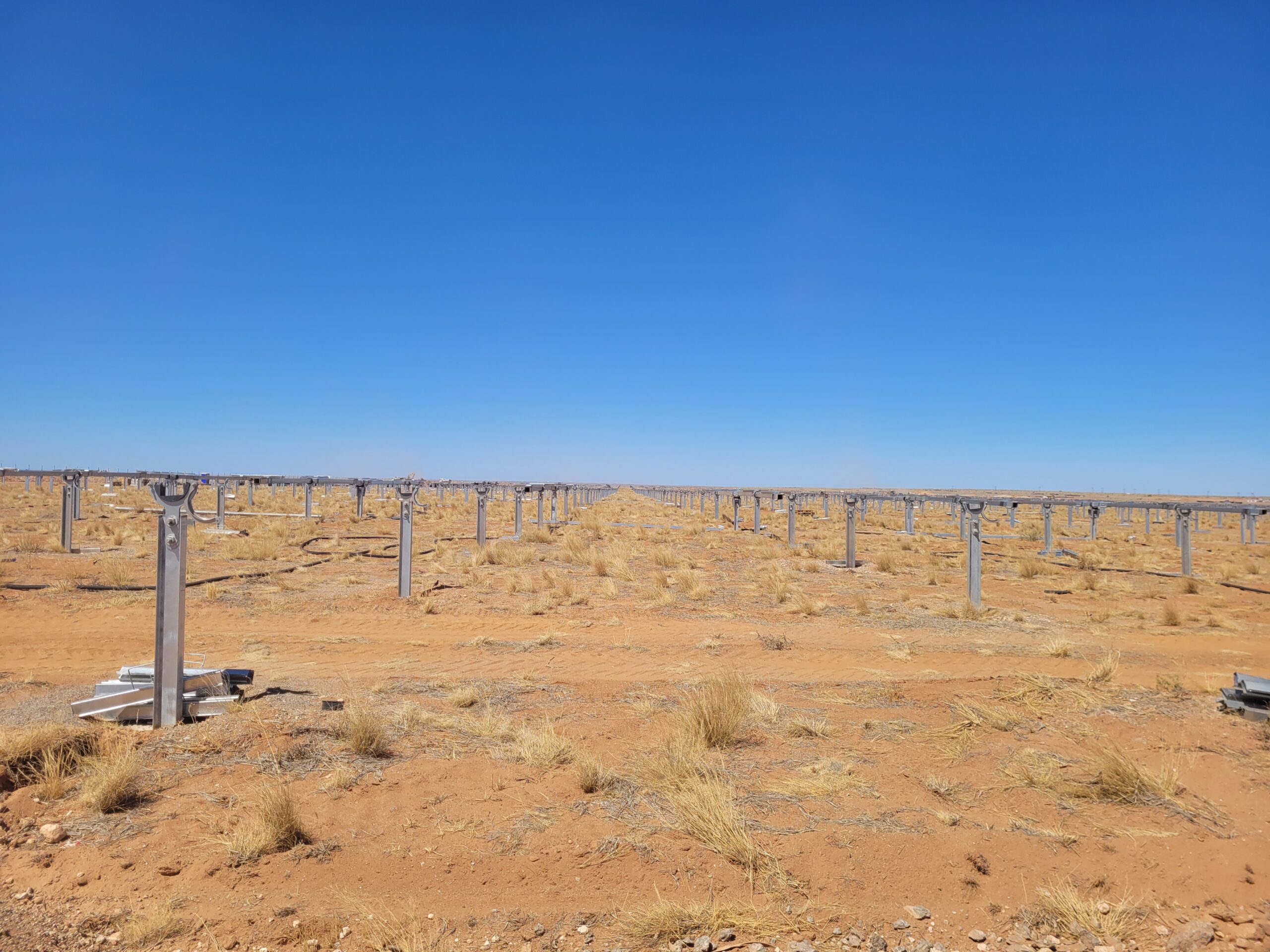
Exit to recycle funds
The project started commercial operations in December 2023. Norfund’s strategy is to contribute to the construction of new renewable capacity, and when the project has proven to be successful (i.e. construction completed and commercial operations commenced), the project is considered to have lower risk and is more suitable for mainstream capital. Norfund can then recycle the funds for new projects. The process for Norfund’s exit from the H1 equity financing has commenced off the back of the project having largely been de-risked and will see Norfund exit its direct exposure to the Kenhardt project by September 2025.
Interviews with construction workers
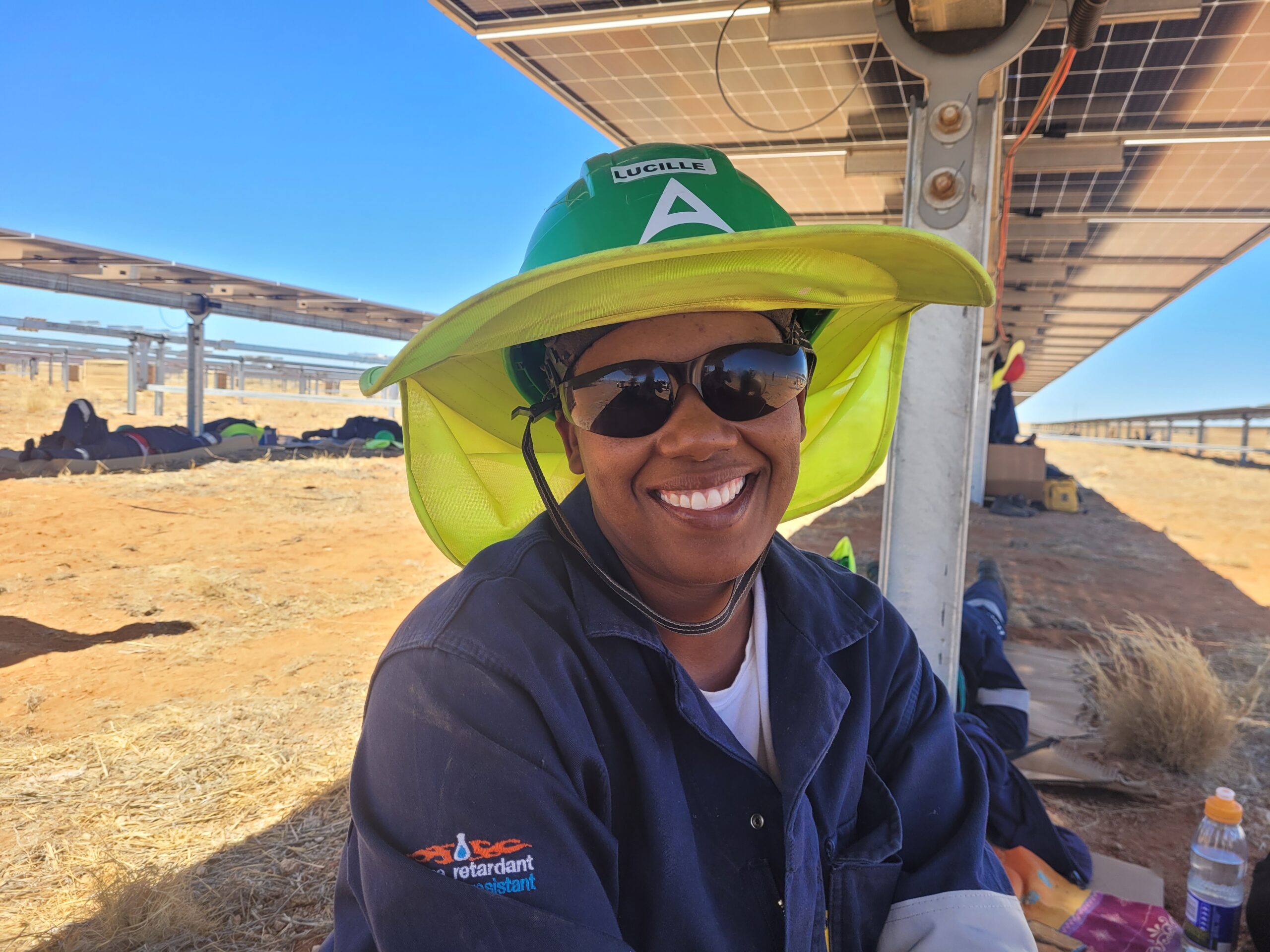
Coreen, construction worker: “I’m a woman, I like this kind of work”
Coreen is involved in constructing the plant by installing cables. She expresses happiness with her new position, having previously worked as a caregiver for older adults. Seeking to expand her skills, she decided to apply for a construction job. The workdays begin early, as none of the workers stay on site overnight. Instead, they commute by company bus—Coreen’s daily journey takes two hours each way.

Marrick – construction worker
Marrick is employed by one of the project’s contractors, where he too is responsible for cable installation. At the project’s peak, over 3,000 workers were active on-site, assembling nearly one million solar panels. During the height of summer, temperatures soared to as high as 50°C, adding to the demanding conditions faced by the workforce. The workers were supplied with water and areas with shade.
Endnotes
[1] IPP Risk Mitigation, South Africa, https://www.ipp-rm.co.za/
[2] IEA in collaboration with WB and WEF – “Financing clean energy transitions in emerging and developing economies”
[3] IEA
4 Nova Economics (2020), https://www.novaeconomics.co.za/our-work/estimating-the-economic-cost-of-load-shedding-in-south-africa
5 CIA world factbook: https://www.cia.gov/the-world-factbook/field/carbon-dioxide-emissions/country-comparison/
6 South Africa, Integrated Resource Plan (2019) https://www.dmre.gov.za/Portals/0/Energy_Website/IRP/2019/IRP-2019.pdf

